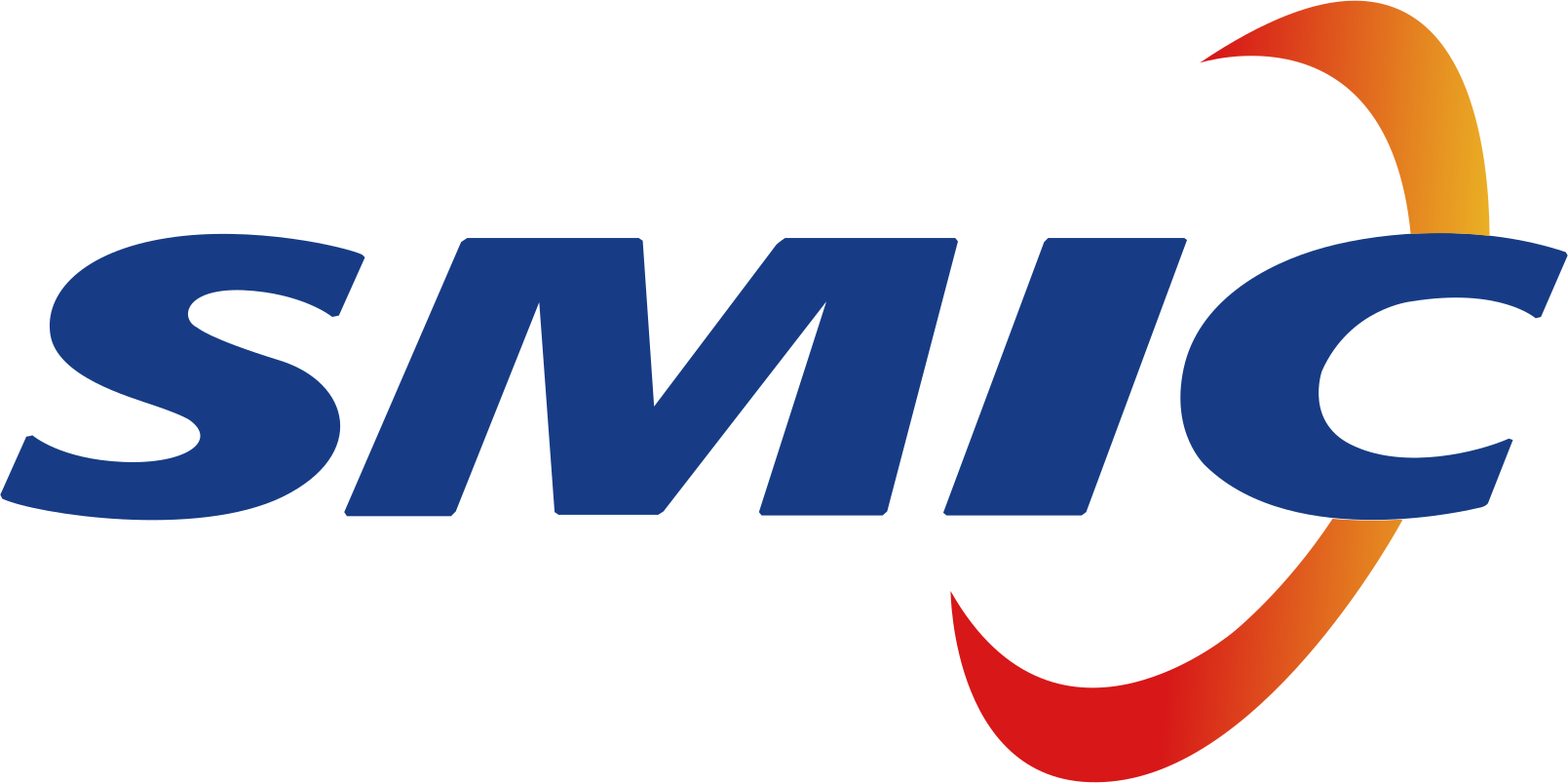SMIC(688981)
Search documents
中芯国际终止出售中芯宁波股权;超卓航科实控人将变更丨公告精选





2 1 Shi Ji Jing Ji Bao Dao· 2025-11-28 13:49
Group 1 - SMIC announced the termination of the sale of its stake in SMIC Ningbo due to failure to reach an agreement within the expected timeframe, retaining a 14.832% stake post-termination, with no significant impact on financial status [2] - Chaozhuo Aerospace's actual controller will change to Hubei State-owned Assets Supervision and Administration Commission, with stock resuming trading on December 1 [2] - ST Lifan faces potential forced delisting due to false disclosures in its 2021-2023 annual reports, with a total false revenue of 592 million yuan, representing 50.91% of the reported revenue for those years [3] Group 2 - Lijun Holdings' subsidiary signed a contract worth approximately 57.6 million USD for high-pressure roller mills, accounting for 52.53% of the audited consolidated revenue for 2024, expected to positively impact future performance [3] - Sanjiang Shopping's second-largest shareholder, Alibaba Zeta, reduced its stake by 5.4768 million shares, decreasing its holding from 30% to 29% [4] - Tianfeng Securities is under investigation by the CSRC for suspected information disclosure violations and illegal financing [5] Group 3 - China Jushi's major shareholder, Zhenstone Group, plans to increase its stake by no less than 550 million yuan and no more than 1.1 billion yuan [6] - Helun Zhe's major shareholder received a notice of investigation for suspected information disclosure violations, which does not affect the company's operations [7] - Yongtai Energy's actual controller also received a notice of investigation for similar violations, with no impact on the company's operations [8] Group 4 - Wuhantian Source's major shareholder, Konka Group, plans to transfer 9.83% of its shares to China Resources Asset Management [9] - Pinggao Electric won a bid for a State Grid project worth approximately 773 million yuan [9] - Zhejiang Longsheng is collaborating with a private equity fund to establish a venture capital partnership [9]
科创板晚报|超卓航科实控人拟变更为湖北省国资委 中芯国际终止出售中芯宁波股权
Xin Lang Cai Jing· 2025-11-28 13:00
Group 1: Industry Developments - The Ministry of Industry and Information Technology (MIIT) is accelerating the introduction of targeted policies to regulate irrational competition in the power and energy storage battery industry, emphasizing the need for high-quality development [1] - Research institutions predict that storage chip prices are expected to rise by approximately 50% due to increasing demand driven by artificial intelligence infrastructure [4] - A report indicates that the global computing power is projected to increase by over 70 times in the next decade, with space data centers expected to form a new industrial chain [5][6] Group 2: Company Announcements - Anxi China has requested Anxi Netherlands to engage in sincere negotiations regarding control issues and to halt overseas capacity expansion while restoring normal supply [2] - Lingkong Tianxing announced that its hypersonic missile "Yukongji-1000" has entered mass production, with an intelligent version currently under development [3] - Jinko Energy expects a doubling of its energy storage system shipment target for next year, with global energy storage demand projected to exceed 400 GWh [11]
A股公告精选 | 闻泰科技(600745.SH)回应:敦促荷兰安世半导体正视问题
智通财经网· 2025-11-28 12:59
Key Points - Guizhou Moutai elected Chen Hua as the chairman of the fourth board of directors and plans to repurchase shares between RMB 1.5 billion and RMB 3 billion [1] - Tianfeng Securities is under investigation by the China Securities Regulatory Commission for suspected violations of information disclosure and illegal financing [1] Share Buybacks - Demai Technology raised the upper limit for share repurchase to RMB 45 per share [5] - Jianbang Technology plans to repurchase shares worth between RMB 15 million and RMB 30 million [5] - Huayuan Holdings intends to repurchase shares worth between RMB 30 million and RMB 60 million [5] Major Investments - Jinling Pharmaceutical plans to invest RMB 893 million in hospital expansion projects [7] - Dongfang Mingzhu intends to invest approximately RMB 500 million to establish a partnership and acquire part of the equity of New H3C [7] - Chang'an Automobile aims to establish a robotics company to develop innovative products and solutions [7] Mergers and Acquisitions - Kaizhong Co. plans to acquire 60% of Anhui Tuosheng's equity, with stock resuming trading on December 1 [7] - Youa Co. has resumed the review process for issuing shares and cash to purchase assets [7] - Jiasheng Technology intends to acquire controlling interest in Shudun Information Technology Co., with stock continuing to be suspended [7] Financing Activities - Shenzhen Energy plans to apply for a public bond issuance with a total scale not exceeding RMB 20 billion [7] - Huakong Saige has terminated its specific object stock issuance [7]
解密主力资金出逃股 连续5日净流出343股




Zheng Quan Shi Bao Wang· 2025-11-28 12:45
Core Insights - A total of 343 stocks in the Shanghai and Shenzhen markets have experienced net outflows of main funds for five consecutive days or more as of November 28 [1] - Among these, Wantai Biological Pharmacy has seen the longest streak of 23 days of net outflows, while Zhongyou Capital follows with 22 days [1] - The largest total net outflow amount is from SMIC, with a cumulative outflow of 4.359 billion yuan over 11 days, closely followed by Dongfang Caifu with 4.189 billion yuan [1] Summary by Category Stocks with Longest Net Outflow Duration - SMIC: 11 days, 4.359 billion yuan, 7.37% of trading volume, -7.72% cumulative change [1] - Dongfang Caifu: 11 days, 4.189 billion yuan, 8.30% of trading volume, -6.88% cumulative change [1] - Zhongyou Capital: 22 days, 2.385 billion yuan, 13.93% of trading volume, -15.96% cumulative change [1] - Wantai Biological: 23 days, 0.425 billion yuan, 10.39% of trading volume, -14.60% cumulative change [1] Stocks with Largest Net Outflow Amount - SMIC: 4.359 billion yuan over 11 days [1] - Dongfang Caifu: 4.189 billion yuan over 11 days [1] - Longi Green Energy: 2.418 billion yuan over 7 days [1] - Daqin Railway: 2.043 billion yuan over 19 days [1] Stocks with Highest Net Outflow Ratio - *ST Dongyi: 23.13% over 8 days, -26.44% cumulative change [1] - Zhongyou Capital: 13.93% over 22 days, -15.96% cumulative change [1] - Daqin Railway: 17.14% over 19 days, -4.86% cumulative change [1] - Aier Eye Hospital: 14.77% over 14 days, -7.78% cumulative change [1]
中芯国际(688981.SH)终止出售参股公司中芯宁波股权

智通财经网· 2025-11-28 11:25
Core Viewpoint - SMIC announced the termination of the agreement for the sale of 94.366% equity in SMIC Ningbo to Hunan Guoke Microelectronics due to the inability to reach consensus within the expected timeframe [1] Group 1 - The transaction was intended to involve Hunan Guoke purchasing a majority stake in SMIC Ningbo [1] - Following the termination, SMIC Holdings retains a 14.832% stake in SMIC Ningbo [1] - The termination of this transaction is not expected to have a significant impact on the company's financial condition [1]
中芯国际(688981) - 港股公告:翌日披露报表

2025-11-28 11:01
公司名稱: 中芯國際集成電路製造有限公司 呈交日期: 2025年11月28日 如上市發行人的已發行股份或庫存股份出現變動而須根據《香港聯合交易所有限公司(「香港聯交所」)證券上市規則》(「《主板上市規則》」)第13.25A條 / 《香港聯合交易所有限公司GEM證券 上市規則》(「《GEM上市規則》」)第17.27A條作出披露,必須填妥第一章節 。 | 第一章節 | | | | | | | | | | | --- | --- | --- | --- | --- | --- | --- | --- | --- | --- | | 1. 股份分類 | 普通股 | 股份類別 | 不適用 | | 於香港聯交所上市 | | 是 | | | | 證券代號 (如上市) | 00981 | 說明 | 港股 | | | | | | | | A. 已發行股份或庫存股份變動 | | | | | | | | | | | | | | 已發行股份(不包括庫存股份)變動 | | 庫存股份變動 | | | | | | 事件 | | 已發行股份(不包括庫存股份)數 目 | | 佔有關事件前的現有已發 行股份(不包括庫存股 份)數目百分比 (註3 ...
中芯国际(00981)终止出售参股公司中芯宁波股权
Zhi Tong Cai Jing· 2025-11-28 10:52
Core Viewpoint - Semiconductor Manufacturing International Corporation (SMIC) announced the termination of a transaction involving the sale of 94.366% equity in its subsidiary, SMIC Ningbo, to Hunan Guoke Microelectronics Co., Ltd. [1] Group 1: Transaction Details - SMIC's wholly-owned subsidiary, SMIC Holdings, and other shareholders of SMIC Ningbo signed an agreement with Guoke Micro to sell the equity [1] - The transaction included the 14.832% equity held by SMIC Holdings in SMIC Ningbo [1] - Following the announcement, the parties involved actively worked towards completing the transaction, but ultimately decided to terminate it due to an inability to reach consensus on related matters [1] Group 2: Post-Transaction Status - On November 28, 2025, the parties signed a termination agreement for the asset purchase agreement [1] - After the termination of the transaction, SMIC Holdings retains its 14.832% equity stake in SMIC Ningbo [1]
中芯国际终止出售参股公司中芯宁波股权
智通财经网· 2025-11-28 10:41
Core Viewpoint - Semiconductor Manufacturing International Corporation (SMIC) announced the termination of a transaction involving the sale of a 94.366% stake in its subsidiary, SMIC Ningbo, to Hunan Guoke Microelectronics Co., Ltd. [1] Group 1: Transaction Details - SMIC's wholly-owned subsidiary, SMIC Holdings, and other shareholders of SMIC Ningbo signed an agreement with Guoke Microelectronics to sell the stake [1] - The transaction included a cash payment and share issuance by Guoke Microelectronics [1] - Following the announcement, the parties involved actively worked towards completing the transaction, but ultimately decided to terminate it due to an inability to reach consensus on related matters [1] Group 2: Post-Transaction Status - As of November 28, 2025, the parties signed a termination agreement, and SMIC Holdings retains a 14.832% stake in SMIC Ningbo after the transaction's cancellation [1]
中芯国际(00981) - 翌日披露报表

2025-11-28 10:33
FF305 翌日披露報表 (股份發行人 ── 已發行股份或庫存股份變動、股份購回及/或在場内出售庫存股份) 呈交日期: 2025年11月28日 如上市發行人的已發行股份或庫存股份出現變動而須根據《香港聯合交易所有限公司(「香港聯交所」)證券上市規則》(「《主板上市規則》」)第13.25A條 / 《香港聯合交易所有限公司GEM證券 上市規則》(「《GEM上市規則》」)第17.27A條作出披露,必須填妥第一章節 。 | 第一章節 | | | | | | | | | | | --- | --- | --- | --- | --- | --- | --- | --- | --- | --- | | 1. 股份分類 | 普通股 | 股份類別 | 不適用 | | 於香港聯交所上市 | | 是 | | | | 證券代號 (如上市) | 00981 | 說明 | 港股 | | | | | | | | A. 已發行股份或庫存股份變動 | | | | | | | | | | | | | | 已發行股份(不包括庫存股份)變動 | | 庫存股份變動 | | | | | | 事件 | | 已發行股份(不包括庫存股份)數 目 | | 佔 ...
中芯国际(688981) - 中芯国际关于终止出售参股公司中芯宁波股权的公告

2025-11-28 10:31
自本次交易披露以来,交易各方积极推进本次交易的各项工作。由于本次交易 相关事项无法在预计时间内达成一致,经交易各方沟通协商后决定终止本次交易。 2025 年 11 月 28 日,交易各方共同签署了《发行股份及支付现金购买资产协 议之终止协议》,本次交易终止后,中芯控股仍持有中芯宁波 14.832%的股权。 1 | A股代码:688981 | A股简称:中芯国际 | 公告编号:2025-032 | | --- | --- | --- | | 港股代码:00981 | 港股简称:中芯国际 | | 中芯国际集成电路制造有限公司 关于终止出售参股公司中芯宁波股权的公告 本公司董事会及全体董事保证本公告内容不存在任何虚假记载、误导性陈述 或者重大遗漏,并对其内容的真实性、准确性和完整性依法承担法律责任。 一、交易概述 2025 年 6 月 5 日,中芯国际集成电路制造有限公司(以下简称"公司")全资 子公司中芯国际控股有限公司(以下简称"中芯控股")及中芯集成电路(宁波) 有限公司(以下简称"中芯宁波")的其他部分股东,与湖南国科微电子股份有限 公司(证券代码:300672.SZ,以下简称"国科微")共同签署了《发行股 ...
